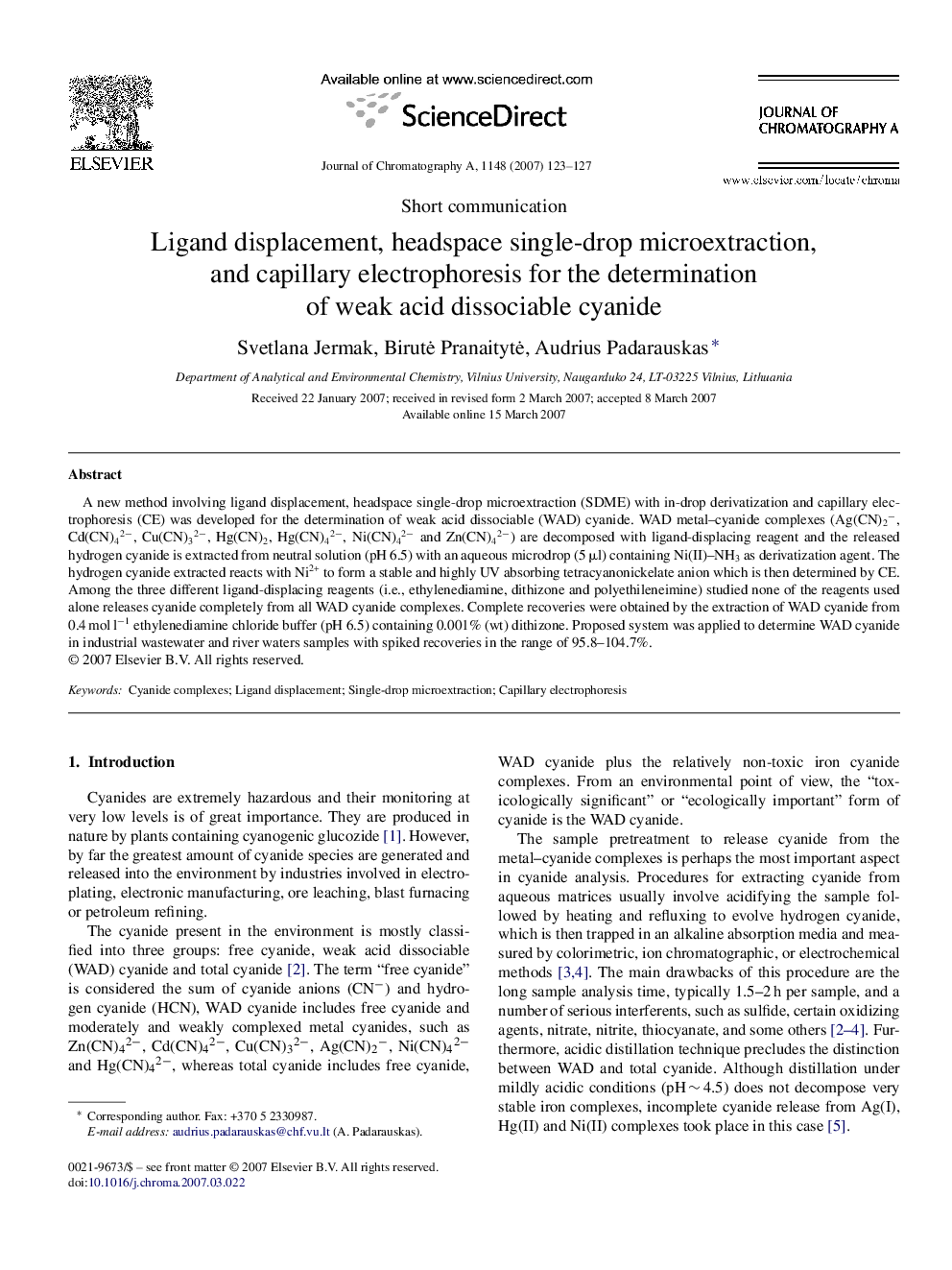| Article ID | Journal | Published Year | Pages | File Type |
|---|---|---|---|---|
| 1208903 | Journal of Chromatography A | 2007 | 5 Pages |
A new method involving ligand displacement, headspace single-drop microextraction (SDME) with in-drop derivatization and capillary electrophoresis (CE) was developed for the determination of weak acid dissociable (WAD) cyanide. WAD metal–cyanide complexes (Ag(CN)2−, Cd(CN)42−, Cu(CN)32−, Hg(CN)2, Hg(CN)42−, Ni(CN)42− and Zn(CN)42−) are decomposed with ligand-displacing reagent and the released hydrogen cyanide is extracted from neutral solution (pH 6.5) with an aqueous microdrop (5 μl) containing Ni(II)–NH3 as derivatization agent. The hydrogen cyanide extracted reacts with Ni2+ to form a stable and highly UV absorbing tetracyanonickelate anion which is then determined by CE. Among the three different ligand-displacing reagents (i.e., ethylenediamine, dithizone and polyethileneimine) studied none of the reagents used alone releases cyanide completely from all WAD cyanide complexes. Complete recoveries were obtained by the extraction of WAD cyanide from 0.4 mol l−1 ethylenediamine chloride buffer (pH 6.5) containing 0.001% (wt) dithizone. Proposed system was applied to determine WAD cyanide in industrial wastewater and river waters samples with spiked recoveries in the range of 95.8–104.7%.
